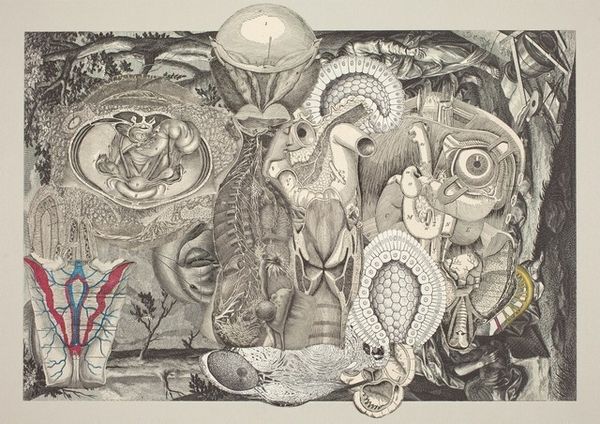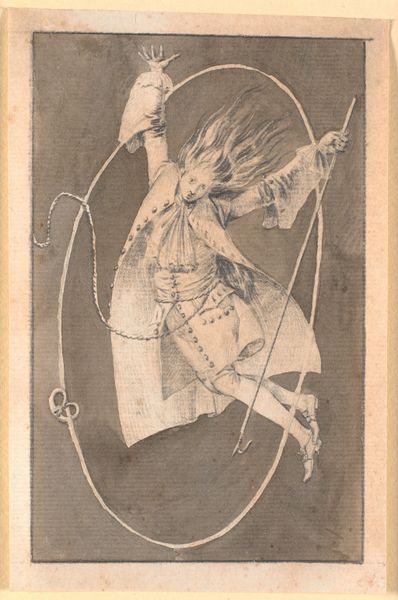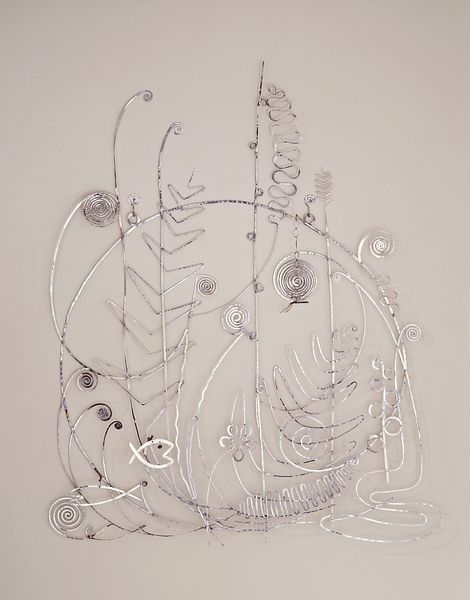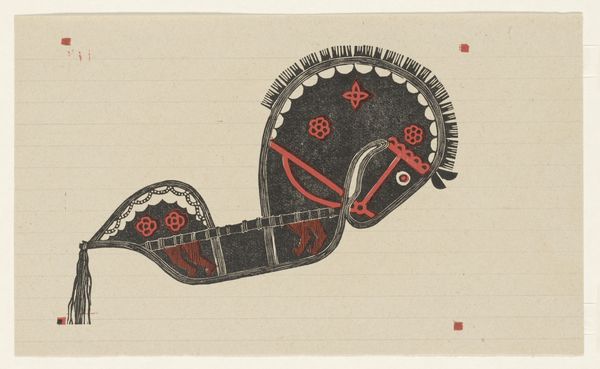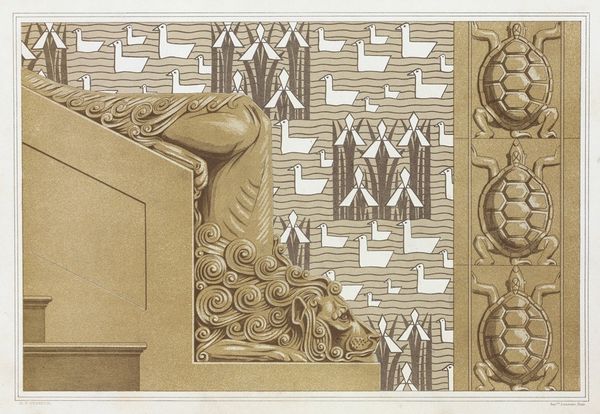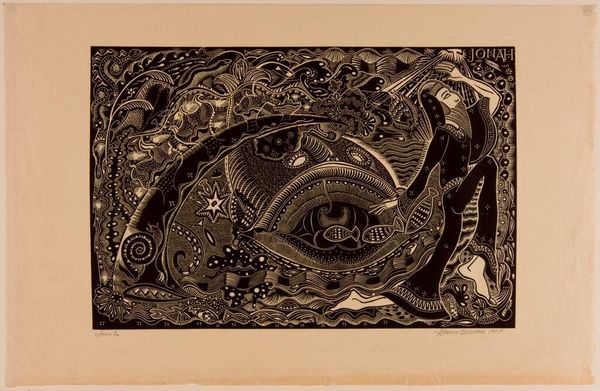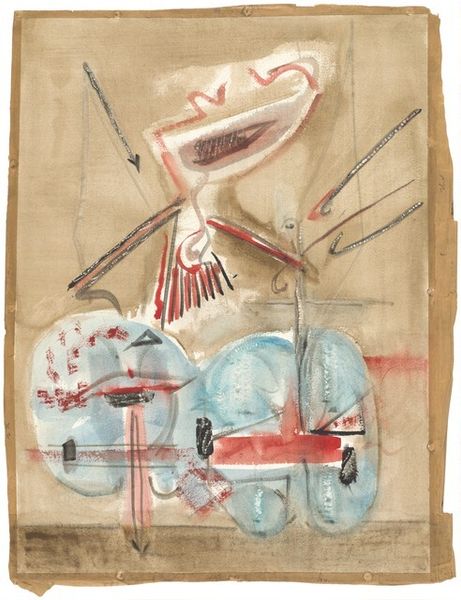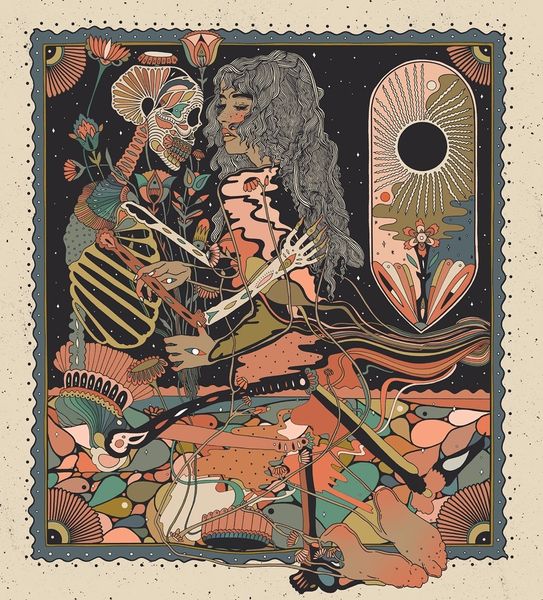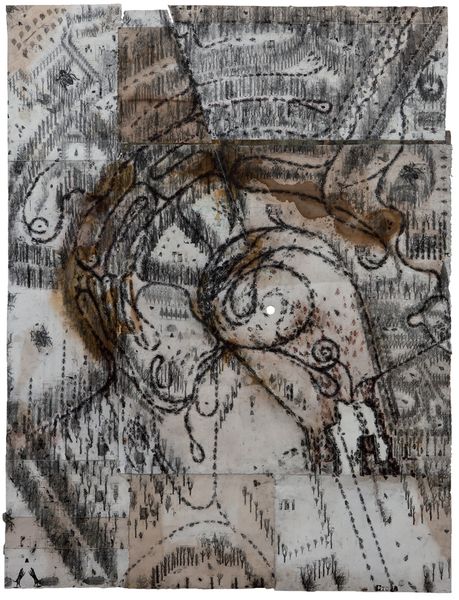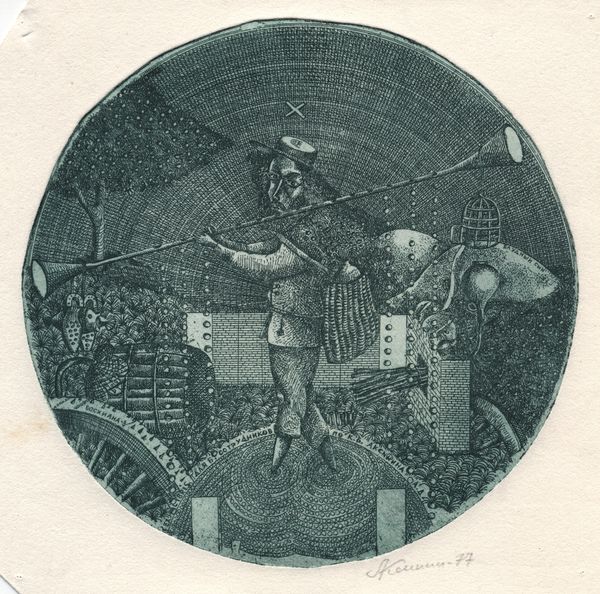
acrylic-paint
#
portrait
#
pop-surrealism
#
fantasy-art
#
acrylic-paint
#
figuration
#
surrealism
#
watercolor
Copyright: Modern Artists: Artvee
Curator: Jason Limon's 2021 piece, "Every One Of Us," uses acrylic paint to build a truly unique world. What catches your eye first? Editor: Well, that odd construct... is it cardboard, some sort of stage prop? It seems both fragile and profoundly weighted by the skeleton embedded within its structure. Gives me the shivers, like stumbling into an existential puppet show. Curator: It's compelling, isn't it? Limon's use of cardboard aesthetics definitely evokes a sense of impermanence, almost like a fleeting memory taking physical form. The words stamped all over it— "Every One Of Us," "Of Us"— hint at a collective narrative built on individual experiences, both heavy and whimsical. Editor: Whimsical, yes, I suppose so, given the flocks of cartoon birds dotting the scene. But also, there's this distinct echo of mortality in that central figure. The skeletal form could represent vulnerability, but also strength, perhaps survival even within artificial constraints of identity imposed by external labels of belonging to 'us'. Curator: Exactly! Limon has such a playful yet dark way of visualizing interconnectedness. He’s always blending symbolism and quirky illustration to uncover larger truths about what it means to exist amongst each other. Do you notice how the smaller skeleton seems to almost topple forward under the burden or weight from above? It could reference inherited traumas perhaps? Editor: I hadn't considered that. The positioning does suggest a chain reaction, a ripple effect stemming from the primary structure. It underscores how systemic constructs, even when self-imposed or cardboard, transmit legacies across generations, creating new states. And there are a multitude of birds suggesting freedom beyond this strange construct. Curator: So while at first it may look like a charming, almost childlike vision, it really delves into far bigger philosophical questions about our collective experience and maybe how our human structures determine freedom. I wonder what Jason was reading that year? Editor: Absolutely, and its cardboard materiality is just so central as a conceptual form to emphasize how identity categories feel like constructs— both flimsy and imposing, beautiful and oppressive. So well captured. I’m still not sure I feel good or bad!
Comments
No comments
Be the first to comment and join the conversation on the ultimate creative platform.
